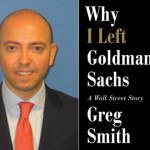Recently a friend working in a rapidly-growing Twin Cities based company lamented how much had changed in his organization the last few years: “It just isn’t the same place. . . People don’t feel as loyal or energized. . . We’re not feeling the same sense of purpose. . .” When I asked him how long things had seemed that way (I felt like a doctor evaluating symptoms,) the time coincided with the company’s IPO a few years earlier. His prognosis (and his organization’s) was becoming clearer; they were likely both victims of a condition that is unfortunately too common among rapidly growing organizations, and that is aggravated by going public. Too often, successful  rapidly growing companies concern themselves mainly with scalability of their business models, giving little consideration to scalability of their core purpose and values. Images of “the Grinch who stole Christmas” come to mind: a too-big body with a too-small heart. Or, going back to our medical analogy, a heart that is insufficiently developed and too immature to support a growing body.
rapidly growing companies concern themselves mainly with scalability of their business models, giving little consideration to scalability of their core purpose and values. Images of “the Grinch who stole Christmas” come to mind: a too-big body with a too-small heart. Or, going back to our medical analogy, a heart that is insufficiently developed and too immature to support a growing body.
Whatever the cause, when an organization loses focus on its sense of purpose and principles that made it distinctive and special in the first place, trouble is usually around the corner. The usual scenario is that excitement about excellent and novel products or services, passion for customers, dedication to communities served or genuine values of founding leaders get usurped by strictly utilitarian and financial considerations. Do not get me wrong; scalability of business models and profit (for corporations) or margin (for public or non-profit entities) is essential, just as the air that we breath is essential for survival. We get into trouble, however, when those become the sole, or even primary considerations. Unless dedication to our core purpose and values grows commensurately with profit or margin considerations, profit overcomes purpose and margin overtakes mission.
In 2007, Starbucks’ CEO Howard Schulz lamented the loss of what had made Starbucks special in the course of its relentless international growth march. Product excellence, customer service and intimate coffee drinking experiences had been unintentionally sacrificed in exchange for growth and profitability targets to meet analysts’ and stockholders’ expectations. Before long neither the Starbucks coffee experience or shareholder returns were meeting expectations; Starbucks’ popularity and profitability rebounded only after a disciplined renewal of its traditional values and commitment to making its coffee experience special again. Krispy Kreme experienced a similar reversal of fortune when the pace of its expansion outgrew what had made its fresh doughnut experience exceptional since 1937. Three years after its IPO in 2000, Krispy Kreme’s stock rose 840%; about that same time I began noticing stale-looking packaged Krispy Kreme doughnuts on the end racks at big-box retailers; not long after that its stock price began a steep descent, recovering some only after attending to the scars of its rapid growth trajectory.
Goldman Sachs partners voted to go public in 1998, over the objections of some partners who considered selling to be a violation of a 129-year “sacred trust.” Throughout its history the Goldman Sachs culture had been characterized by always putting clients’ best interests first, smart yet conservative investing that steadily grew wealth, and careful selection and  grooming of partners who served as guardians of the firm’s culture. Many believe that Goldman Sach’s contribution to Wall Street’s 2008 melt-down can be traced to the erosion of its traditional values, overtaken eventually by a culture devoted to maximization of returns for shareholders over clients’ best interests. Greg Smith was a senior Goldman Sachs manager when he wrote Why I Quit Goldman Sachs in 2012 and described the deleterious effect of Goldman’s eroded culture on customers and employees.
grooming of partners who served as guardians of the firm’s culture. Many believe that Goldman Sach’s contribution to Wall Street’s 2008 melt-down can be traced to the erosion of its traditional values, overtaken eventually by a culture devoted to maximization of returns for shareholders over clients’ best interests. Greg Smith was a senior Goldman Sachs manager when he wrote Why I Quit Goldman Sachs in 2012 and described the deleterious effect of Goldman’s eroded culture on customers and employees.
It is a challenge for any significant organization, especially if publicly held, to grow in the spirit of its core purpose, principles and what made it distinctive originally. Minnesota-based Medtronic has rightfully prided itself over the years as a mission-driven, values based corporation; no doubt part of its deliberation evaluating its recent Covidien acquisition and movement of operations to Dublin was how that squared with its commitment to corporate citizenship. Educational institutions of all stripes are finding it difficult to grow by the formulas that originally earned their academic distinction. A recent editorial in the Star Tribune by an early Metropolitan State University alum encouraged the University to grow by embracing its original values and history of “breaking the rules” to advance learning.
So how do we grow without losing what makes us great?
- First be clear about what makes you special – commitment to a cause or vital purpose, foundational principles, valued cultural norms and other distinctive characteristics. Determine the non-negotiables – those aspects of who you are and how you operate that should not change.
- Imbed those distinctive characteristics into your culture, systems and practices. Tell stories that reinforce what makes you special, hire and promote to reinforce those distinctive qualities, and make sure that what gets measured and rewarded reinforces your desired “DNA.” In their excellent book Scaling Up Excellence*, authors Robert Sutton and Huggy Rao describe how those best at scaling up cultivate a strong organizational “mindset.” One such tool employed by Facebook is their “boot camp,” where new hires are thoroughly oriented to what is desirable and what is undesirable.
- Use what makes you special as a “litmus” test for potential avenues of growth. For example, will an acquisition or merger provide opportunities to extend your purpose and desired culture or endanger them? Don’t overestimate your ability to scale up your values and desired culture while plotting overly optimistic growth trajectories. Michael Depatie, CEO of highly successful Kimpton Hotels, is wary of how the “Kimpton magic” would translate to new markets. Speaking of his reluctance to expand more quickly or into overseas markets, he says “I’ve got a golden goose here, but it can lay only so many eggs so quickly.”
- Don’t confuse preservation of your truly distinctive qualities that add value with doing everything the same. Growth requires doing some things differently and no longer doing some things altogether. As the authors of Scaling Up Excellence put it: “Scaling requires both addition and subtraction.” They liken unnecessary rules, roles and rituals to barnacles on the bottom of a ship that only impede progress.
- Stay connected. Increasing complexity, multiple sites and expanding headcount create additional challenges for keeping the troops engaged and on the same page. All-employee meetings lose their effect when we swell from fifty to five hundred employees, but that
 only makes the need for quality communication even greater. “Leading by walking around,” live and virtual “town hall” meetings, conference calls, interactive intranet sites and additional tools for staying connected grow in importance when scaling up. As numbers become too great for one all-hands meeting with a founder or CEO, department, work unit and team meetings can serve well – assuming that meeting leaders represent the desired culture well and possess the required communication capability.
only makes the need for quality communication even greater. “Leading by walking around,” live and virtual “town hall” meetings, conference calls, interactive intranet sites and additional tools for staying connected grow in importance when scaling up. As numbers become too great for one all-hands meeting with a founder or CEO, department, work unit and team meetings can serve well – assuming that meeting leaders represent the desired culture well and possess the required communication capability. - Don’t mistake getting bigger with getting better. Some organizations may be able to grow quality without growing quantity; boutique retail and professional services firms are examples. Be clear about your vision and “end game.” Can you accomplish what you desire and defend against competitors by staying local, for example? Are you building an organization that can be passed on to your next generation, is your goal to sell it, or will you go public?
It is possible to scale up our organization with losing its soul, but not easy. I hope that these guidelines are useful helping you plan for growth.
* Sutton, Robert I. and Rao, Hayagreeva. Scaling Up For Excellence – Getting To More Without Settling For Less; Crown Publishing Group, New York, NY. 2014
The fatal metaphor of progress, which means leaving things behind us, has utterly obscured the idea of real growth, which means leaving things inside us.
Gilbert K. Chesterton
Photo credits: Google Images – Dr. Karin Smithson, theurbanpost.com, pixabay.com
